While the “Wilson’s Storm-Petrel is commonly regarded as one of the most abundant seabirds in the world, with a population reaching several million pairs,” it has only been recorded in eBird for Anguilla once. The incidental report from May 1975 shows the Annagada Passage for the location, and there are no photographs to confirm the record.
You can imagine my surprise when Friend of the Newsletter, Patrick Webster, described a bird he often sees while fishing. Based on his description and a review of The Sibley’s Guide to Birds, he identified the Wilson’s Storm-Petrel.
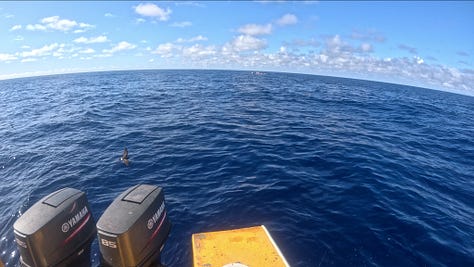
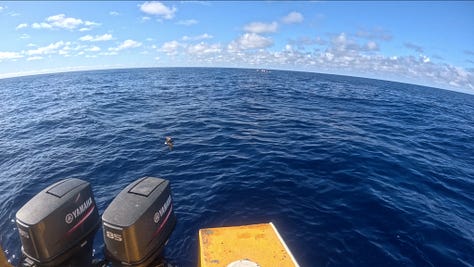
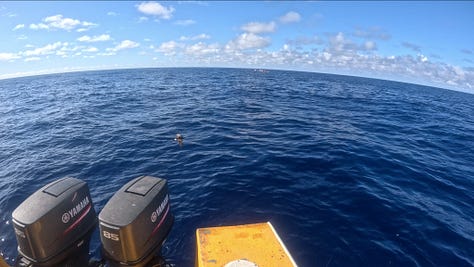
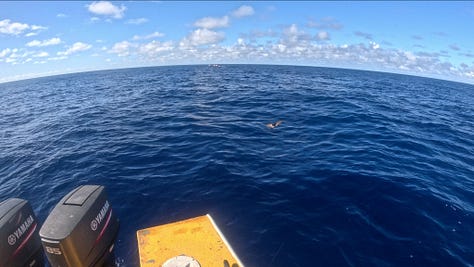

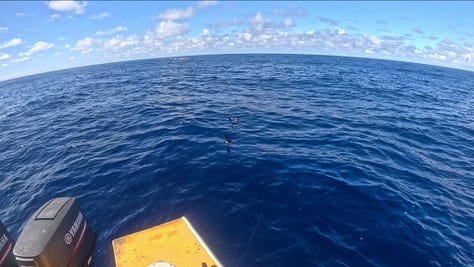
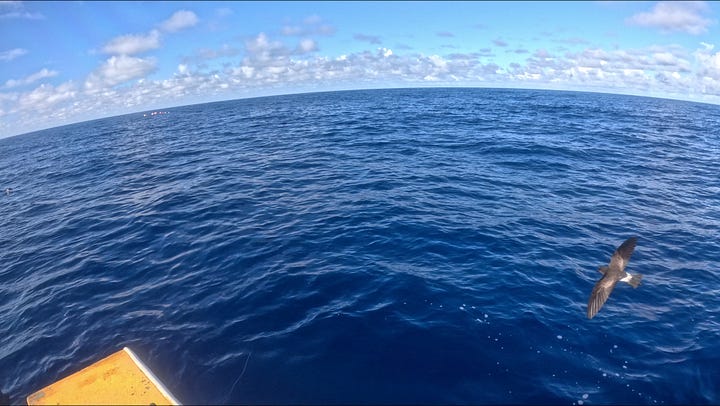
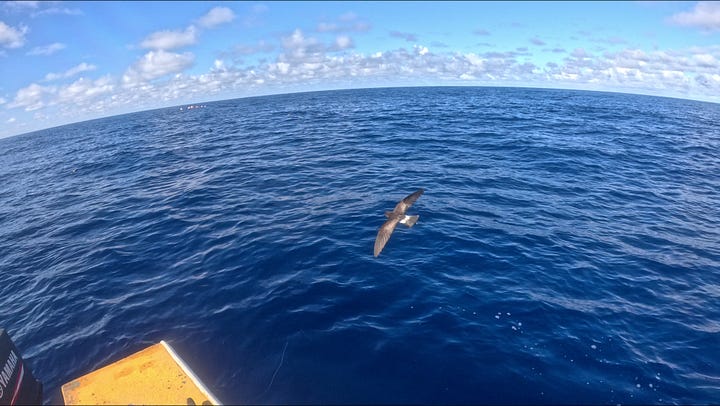
To confirm the sighting, I sent Patrick off on his next fishing trip with my GoPro in hand.
He spotted the birds at two locations where he fishes and captured videos. Patrick recorded all species seen at the two locations for eBird. I pulled a few frames from those videos that gave clear pictures of the species for the record.
I include one of the videos below, as taken from the fishing boat Opportunity on May 8, 2025.
Birds of the World provides the following identifying information for the Wilson’s Storm-Petrel:
“Wilson's Storm-Petrel is a small (15–20 cm [1]; 28–50 g [2]; wingspan 34–42 cm [1]), dark brown storm-petrelvideo of the genus Oceanites, with a broad, white band across the uppertail coverts. Headphoto and upperpartsphoto mostly sooty-black, less brownish on remiges; upperwing sooty-black photo with pale gray brown greater coverts; in worn plumage, dark areas are browner, upperwing panel noticeably paler, tips to greater and often to median coverts whitish. Underwing blackish, sometimes with paler tips to greater secondary-coverts forming inconspicuous pale bar on proximal half of wing; underparts sooty-black except white uppertail-coverts extending to lateral undertail-coverts and thighs. This species has long tarsi with diagnostic yellow webbingphoto in the feet. The toes often project beyond the squarephoto or slightly notched tail in flight, which is fluttery and gliding. Sexes alike, but female averages slighly larger, e.g. wing length 151–161 mm versus 143–157 mm (3). Juvenile as adult, but first-year birds will be in fresh plumage (May–Jun) when adults are worn or in molt, while juveniles of nominate race often show some white feathers on belly (1).”
The distribution map and graphic illustration for this bird are shown below:
Patrick tells me that the local name for this species is “Tappit,” which approximates the bird’s pattering foot motion as it feeds. This is described below:
“Feeding
The following summary is based on Brooke (3).
Feedingvideo almost entirely aerialvideo , by dipping (73% of observations) or pattering (27%: Harper 1987). May occasionally dive to shallow depths to retrieve food (Murphy 1936), using either shallow-plunging and, more rarely, surface-diving (2). Follows ships and attends trawlers regularly; follows cetaceans (e.g. baleen whales, but also dolphins; 13, 14) and large flocks (sometimes 1000s) regularly join feeding frenzies with other seabirds (2). Frequently observed with Hydrobates melania, H. homochroa and H. furcatus off Pacific North America (1). Studies have shown conflicting results as to whether olfaction is key for finding food (Jouventin and Robin 1984, Nevitt 1999).
Diet
Major Food Items
Mostly planktonic crustaceans, especially krill (Euphausia), and fish (Protomyctophum); also small squid, polychaetes, gastropods and carrion.”
With the only record occurring 50 years ago, and Patrick’s familiarity with the species, it is clear that the Wilson’s Storm-Petrel is significantly underreported. This is likely true of other pelagic species in Anguilla’s waters.
Patrick is now equipped with the waterproof bird cards that he carries on his boat to help identify what he sees. Next, he needs a camera to complete his Roving Sea Reporter gear!
Many thanks to Patrick for his reporting on this species. His offshore observations give a clearer picture of the seabirds that inhabit Anguilla’s waters.
Who wants to see more of what Anguilla’s waters have to offer? 🤔






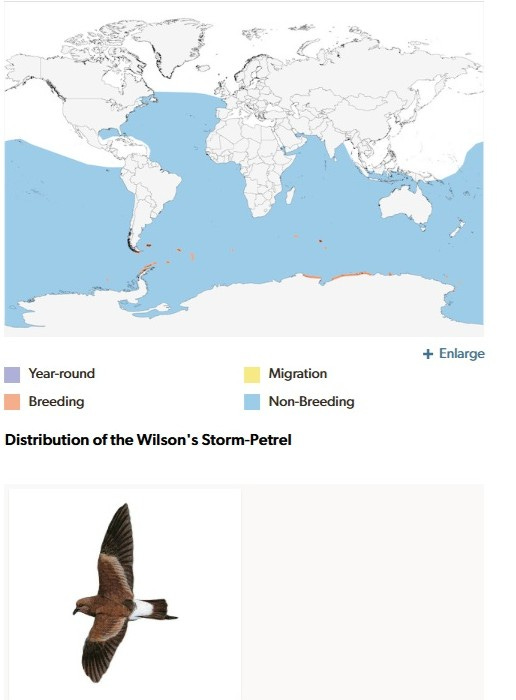
Well done, Patrick!
What a fantastic record, well done to all involved